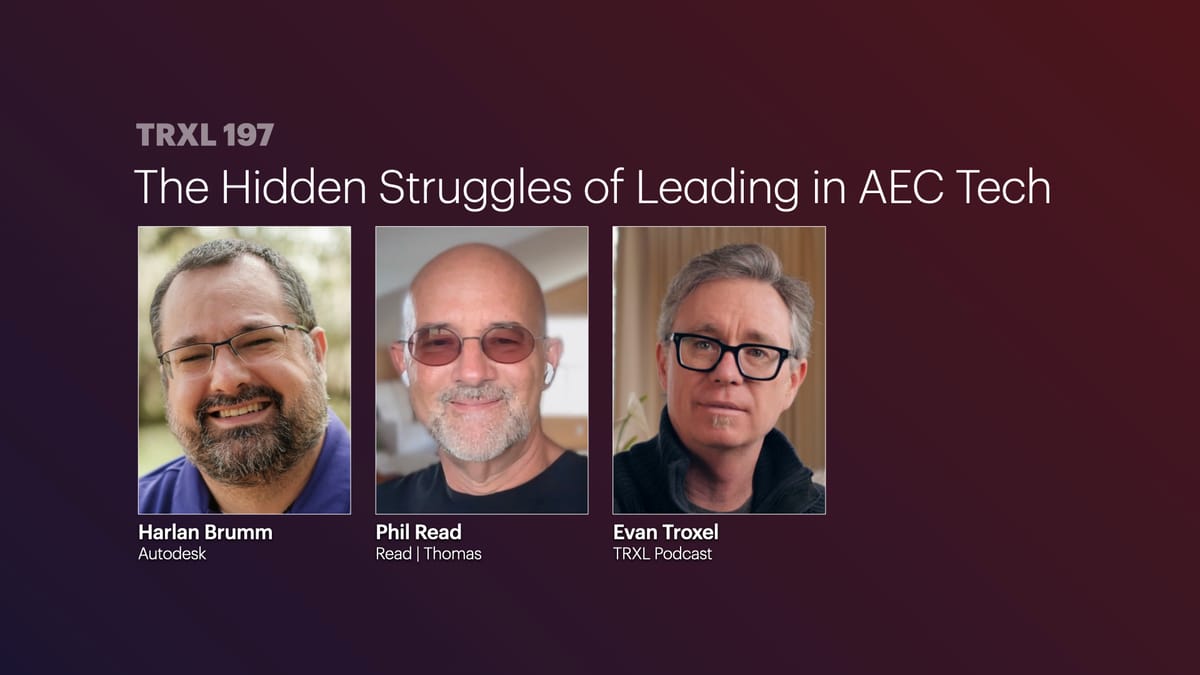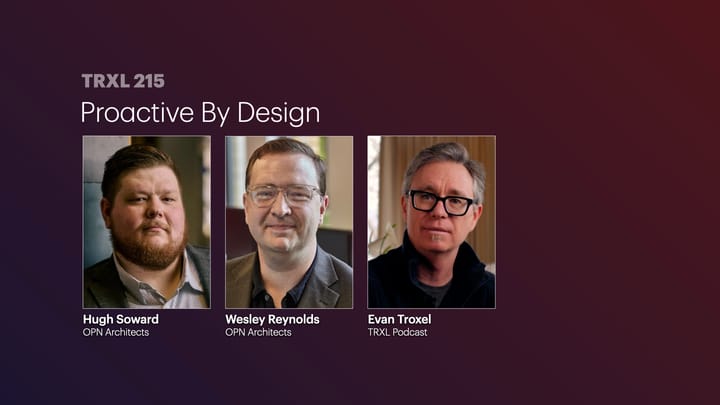Leadership Edge: TRXL 197
Exploring the hidden challenges of AEC leadership, fostering vulnerability in small retreats, shifting from technical mastery to people-focused growth, and building authentic connections that empower leaders to navigate complexity with clarity and resilience.

This newsletter provide key insights for forward-thinking leaders seeking innovation in AEC who are short on time, offering the context of each conversation without the need to listen to the full episode. It’s designed to keep you updated, spark your interest, and encourage you to tune in if the ideas resonate.
Summary
There’s a softer, often overlooked side to leadership development in AEC. One that’s rooted in vulnerability, interpersonal growth, and the courage to truly show up. Unlike large conferences where it’s easy to fade into the background, smaller, intentional gatherings require us to advocate for ourselves, engage deeply, and lean into discomfort. It’s in these spaces that real transformation can happen.
In episode 197 of TRXL, I sat down with Phil Read and Harlan Brumm to discuss the unseen challenges of transitioning from a technologist to a leader in AEC. This wasn’t a software conversation. It was about people, leadership, and personal growth. We explored Phil’s AEC Acoustics Leadership Retreat (coming in November), designed to strip away noise and complexity, creating a safe, reflective space for emerging leaders. Both Harlan and I shared firsthand experiences from last year’s event, highlighting the emotional intelligence and community support needed to navigate this pivotal career shift.
“You can’t just have compression all the time. Leadership conversations need moments of decompression to actually sink in.” – Phil Read
Key Takeaways
Here are my top takeaways from the podcast episode. Then we'll get into the deeper analysis.
- From Tools to People: Leadership in AEC demands a shift from technical mastery to managing and inspiring teams.
- The Isolation of Leadership: Many leaders face challenges privately, lacking resources and communities that truly understand AEC-specific pressures.
- Safe Space for Growth: Phil’s retreat fosters vulnerability, trust, and deep connections absent from traditional conferences.
- Non-Transactional Learning: The event focuses on conversations, shared experiences, and authentic dialogue, not checklists or certificates.
- Decompression Matters: Removing distractions and complexity allows for genuine personal and professional breakthroughs.
- Building Trust Through Routine: Shared meals, downtime, and organic conversations build relationships that last beyond the event.
Episode Analysis
The Unspoken Shift in AEC Careers
Technical expertise gets you promoted, but leadership requires a new mindset. Phil described his own journey: “It was so nice when I could just focus on Revit… then you get elevated into management and you can’t talk to everyone about everything.” This transition often blindsides AEC professionals, leaving them without a roadmap or support system.
The Power of Safe, Intentional Spaces
The Leadership Retreat exists to solve this gap. It intentionally removes the trappings of corporate leadership training (hotel ballrooms, rigid schedules, posturing) and replaces them with quiet nature, small groups, and authentic conversations. Harlan captured it perfectly: “At the end of the day, you’re just standing on the dock…thinking, ‘This is what I need to be a better leader for my team.’”
Beyond Networking: Building Real Connections
Unlike typical tech conferences, the retreat enables deeper connections. Small groups, shared meals, and spontaneous conversations build trust over time. As Phil put it: “Eating together builds trust. Having regular meals for a week builds it even more.” This environment transforms networking into meaningful, ongoing professional relationships. And it’s worth saying it out loud: your network is everything in this industry. Build a great one.
Decompression as Leadership Development
The retreat isn’t about squeezing in more sessions. It’s about creating space for reflection. Flexibility allows participants to engage in group discussions, quiet walks, or one-on-one talks. This balance between structured sessions and decompression helps leaders process challenges and return to their roles recharged and more effective.
Conclusion
This conversation was a powerful reminder that becoming a leader in AEC isn’t just about technical skills, it’s about evolving as a person. Too often, we navigate this transition alone. Phil’s retreat offers a rare, transformative experience where leaders can be vulnerable, supported, and equipped to face complex challenges in their firms. If you’ve ever felt the weight of leadership without a clear path forward, this conversation and retreat may be exactly what you need.
My Question for You
How often do you create intentional space to reflect on your leadership journey, not just your technical expertise. And who in your professional circle truly understands what you’re navigating?
Practical Recommendation
If you’re an emerging or current leader in AEC feeling overwhelmed or isolated, seek out intentional communities of peers. Consider attending specialized retreats like Phil Read’s AEC Acoustics Leadership Retreat, where you can step away from daily noise, build authentic connections, and return with renewed clarity and tools for leading effectively.
Do these ideas spark your interest or make you want to dive deeper into the details? Click below to listen to the podcast and read the show notes to see where the rabbit trail goes 👇




